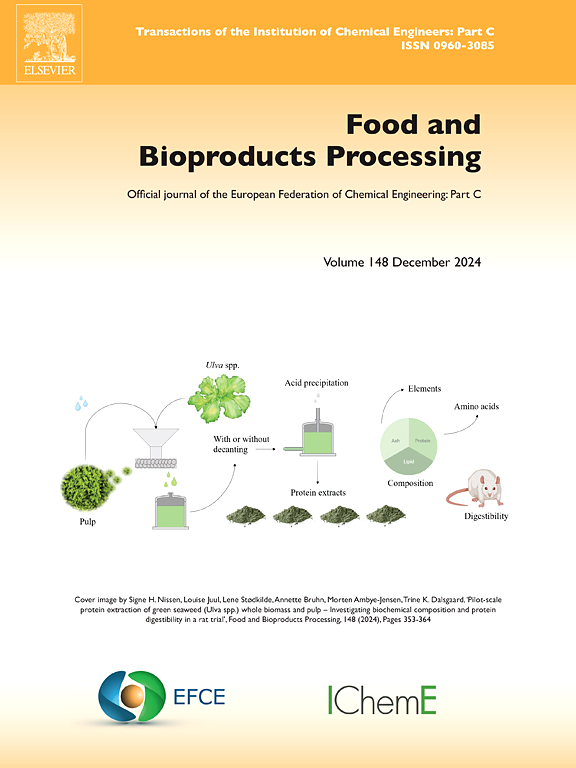Effect of production scale on the techno-economic viability and environmental life cycle analysis of lactic acid production in a sugarcane biorefinery
IF 3.5
2区 农林科学
Q2 BIOTECHNOLOGY & APPLIED MICROBIOLOGY
引用次数: 0
Abstract
Biorefineries are vital for advancing circular economy and reducing the effects of products fossil fuels derived products on the environment. However, biorefineries often operate at smaller production scales than fossil refineries due to limited feedstock availability, which may be addressed by centralised processing with multiple feedstock sources. Lactic acid (LA) has several industrial applications and is a platform chemical used to produce products like acrylic acid and propylene glycol. The economic and environmental performances of an integrated biorefinery at different production scales, through different levels of feedstock centralization, were investigated, to determine the optimal scale for sugarcane-based LA production. Decreasing values for the minimum selling price (MSP; 1312–849 US$.t−1) and increasing internal rates of return (IRRs; 31–64 %) were observed with increasing conversion scales of sugarcane A-molasses. The MSPs decrease from 90 to 450 ktLA.y−1 with small improvements in profitability beyond 450 ktLA.y−1, as confirmed by stochastic financial uncertainty analysis. In the environmental assessment, a linear increase was observed across all impact categories, mainly due to the added fuel consumption for feedstock transportation. LA production had a GWP100 range of 0.87–0.95 kg CO2-eq.kgLA−1 and an abiotic depletion potential of 12–13 MJ.kgLA−1 which increased as the scale increased. In the ozone depletion category emissions of 9.96×10−8-1.13×10−7 kg CFC-11 eq.kgLA−1 comparable to other studies available in literature. Similarly, emission ranges of 1.11–1.17, 0.63–0.66, and 1581–1641 kg 1,4-DB eq.kgLA−1 were obtained in the human toxicity, freshwater and marine aquatic ecotoxicity categories as the scale increased. Environmentally the smallest scale at which transportation of feedstock was avoided (i.e. 90 ktLA.y−1) is preferred as opposed to 450 ktLA.y−1 for economic performance.
生产规模对甘蔗生物精炼厂乳酸生产的技术经济可行性和环境生命周期分析的影响
生物精炼厂对于推进循环经济和减少化石燃料衍生产品对环境的影响至关重要。然而,由于原料供应有限,生物精炼厂的生产规模往往小于化石精炼厂,这可以通过多种原料来源的集中加工来解决。乳酸(LA)有多种工业用途,是一种用于生产丙烯酸和丙二醇等产品的平台化学品。通过不同程度的原料集中化,研究了不同生产规模的综合生物精炼厂的经济和环境性能,以确定以甘蔗为原料的 LA 生产的最佳规模。随着甘蔗 A-蔗糖转化规模的扩大,最低销售价格(MSP;1312-849 美元/吨-1)不断降低,内部收益率(IRR;31-64%)不断提高。随机财务不确定性分析证实,从 90 ktLA.y-1 到 450 ktLA.y-1,最大生产潜力下降,超过 450 ktLA.y-1 后盈利能力略有提高。在环境评估中,所有影响类别都呈线性增长,这主要是由于原料运输增加了燃料消耗。LA 生产的 GWP100 范围为 0.87-0.95 kg CO2-eq.kgLA-1,非生物消耗潜能值为 12-13 MJ.kgLA-1,随着规模的扩大而增加。臭氧消耗类的排放量为 9.96×10-8-1.13×10-7 kg CFC-11eq.kgLA-1,与文献中的其他研究结果相当。同样,随着规模的增加,在人类毒性、淡水和海洋水生生态毒性类别中,排放范围分别为 1.11-1.17、0.63-0.66 和 1581-1641 kg 1,4-DB eq.kgLA-1。从环境角度看,避免原料运输的最小规模(即 90 ktLA.y-1)比 450 ktLA.y-1 更符合经济效益。
本文章由计算机程序翻译,如有差异,请以英文原文为准。
求助全文
约1分钟内获得全文
求助全文
来源期刊

Food and Bioproducts Processing
工程技术-工程:化工
CiteScore
9.70
自引率
4.30%
发文量
115
审稿时长
24 days
期刊介绍:
Official Journal of the European Federation of Chemical Engineering:
Part C
FBP aims to be the principal international journal for publication of high quality, original papers in the branches of engineering and science dedicated to the safe processing of biological products. It is the only journal to exploit the synergy between biotechnology, bioprocessing and food engineering.
Papers showing how research results can be used in engineering design, and accounts of experimental or theoretical research work bringing new perspectives to established principles, highlighting unsolved problems or indicating directions for future research, are particularly welcome. Contributions that deal with new developments in equipment or processes and that can be given quantitative expression are encouraged. The journal is especially interested in papers that extend the boundaries of food and bioproducts processing.
The journal has a strong emphasis on the interface between engineering and food or bioproducts. Papers that are not likely to be published are those:
• Primarily concerned with food formulation
• That use experimental design techniques to obtain response surfaces but gain little insight from them
• That are empirical and ignore established mechanistic models, e.g., empirical drying curves
• That are primarily concerned about sensory evaluation and colour
• Concern the extraction, encapsulation and/or antioxidant activity of a specific biological material without providing insight that could be applied to a similar but different material,
• Containing only chemical analyses of biological materials.
 求助内容:
求助内容: 应助结果提醒方式:
应助结果提醒方式:


